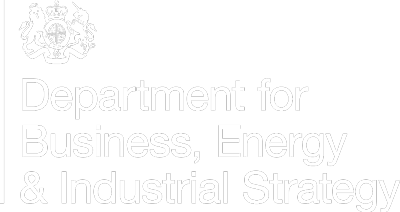Mendicula ferruginosa (Forbes, 1844)
Thyasiroidea : Thyasiridae |
| Tebble name: | Thyasira ferruginea Winckworth |
| Smith & Heppell name: | Thyasira ferruginea (Locard, 1886) |
To size: To 4.5mm. Shell Structure: Shell fragile but coated with a continuous, heavy ferruginous deposit. Equivalve: Equivalve. Equilateral: Slightly inequilateral, beaks just behind midline. Tumidity: Moderate. Outline: Subovate to subcircular, only a little longer than high; posterior dorsal margin long almost straight and sloping steeply to subacute posterior; anterior broadly rounded. Contour: Umbo prominent; posterior folds obsolete; small lunule present.
Sculpture: Entirely obscured in all but the smallest shells by a thick rust coloured deposit. Dead valves lose the coating to reveal a sculpture of weak concentric lines. Margin: Smooth. Ligament: External but in a sunken resilifer extending to about half the length of the posterior dorsal margin. Hinge: Weak, hinge plate thickened anteriorly this developing into a tubercle in the LV and a marginal flange in RV. Pallial Musculature: Muscle scars obscure. Colour: Shell white, coating rust brown. Additional Characters: 1 demibranch.
Distribution & Ecology
Probably a suspension feeder as Dufour found no symbiotic bacteria. Gill with 1 demibranch. Lives in mud/muddy sand sediments.
Gill anatomy – Dufour, 2005
Gross anatomy – Payne & Allen, 1991
Depth Range
Continental Shelf (to 200m)
Continental Margin Zone (200 - 500m)
Bathyal (500 - 2000m)
Abyssal Rise (2000 - 4000m)

Additional Information & Related Species
Additional Comments
Related Species
Thyasiroidea : Thyasiridae
References
Listed are literature citing Mendicula ferruginosa (Forbes, 1844). Reference containing the species Type Description is highlighted.
|
Dufour S C 2005. Gill anatomy and the evolution of symbiosis in the bivalve family Thyasiridae. Biological Bulletin. 208: 200-212. |
|
Forbes E 1844. Report on the Mollusca and Radiata of the Aegean Sea, and on their distribution, considered as bearing on geology. Reports of the British Association for the Advancement of Science. 1843: 130-193. |
|
Olabarria C. 2005. Patterns of bathymetric zonation of bivalves in the Porcupine Sea Bight and adjacent abyssal plain, NE Atlantic. Deep-Sea Research I. 52: 15-31. |
|
Oliver P G & Killeen I J 2002. The Thyasiridae (Mollusca: bivalvia) of the British continental shelf and North Sea Oilfields. Studies in Marine Biodiversity and Systematics from the National Museum of Wales. BIOMOR Reports. 3: 1-73. |
|
Payne C.M. & Allen J.A. 1991. The morphology of deep-sea Thyasiridae (Mollusca: Bivalvia) from the Atlantic Ocean. Philosophical Transactions of the Royal Society of London Series B. 334: 481-566. |
|
Taylor J D, Williams S T & Glover E A 2007. Evolutionary relationships of the bivalve family Thyasiridae (Mollusca: Bivalvia), monophyly and superfamily status. Journal of the Marine Biological Association of the United Kingdom. 87: 565-574. |
Resources
- Conchological Society
of Great Britain & Ireland
Provides resources for understanding, identifying, recording, and conserving molluscs - CLEMAM
Check List of European Marine Mollusca - MarLIN
The Marine Life Information Network for Britain and Ireland (MarLIN) provides information for marine environmental management, protection and education. It is a centre of excellence in spatially based and time-series marine biological information and supports good stewardship in the marine environment. - NBN Gateway
National Biodiversity Network's Gateway. Use it to explore UK biodiversity data, as contributed by participating data providers. - BivAToL
- MarBEF
- Malacological Society
- Unitas Malacologica
- Census of Marine Life
- MarBEF
MarBEF, a network of excellence funded by the European Union and consisting of 94 European marine institutes, is a platform to integrate and disseminate knowledge and expertise on marine biodiversity, with links to researchers, industry, stakeholders and the general public.























